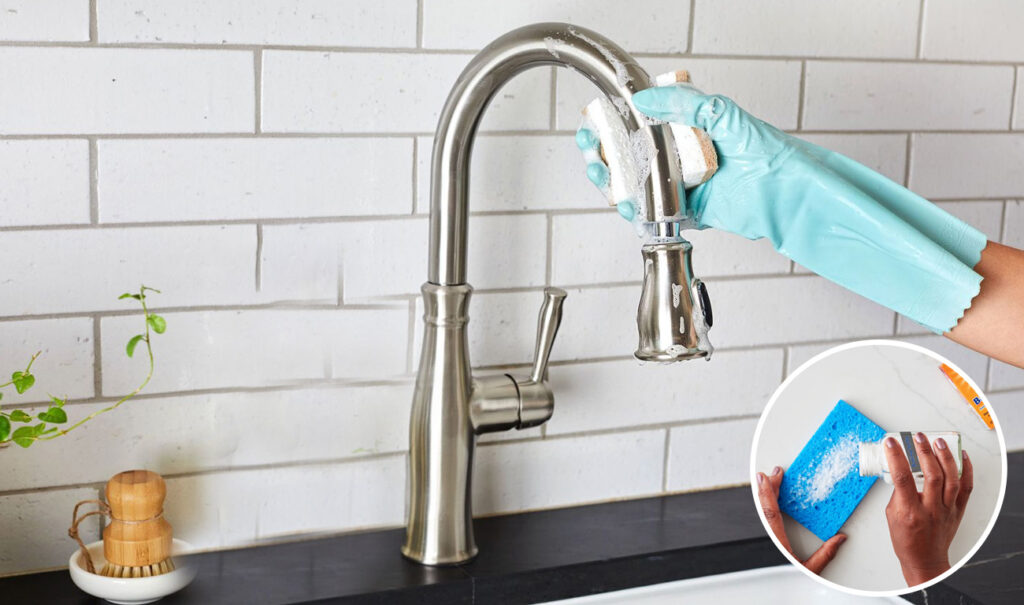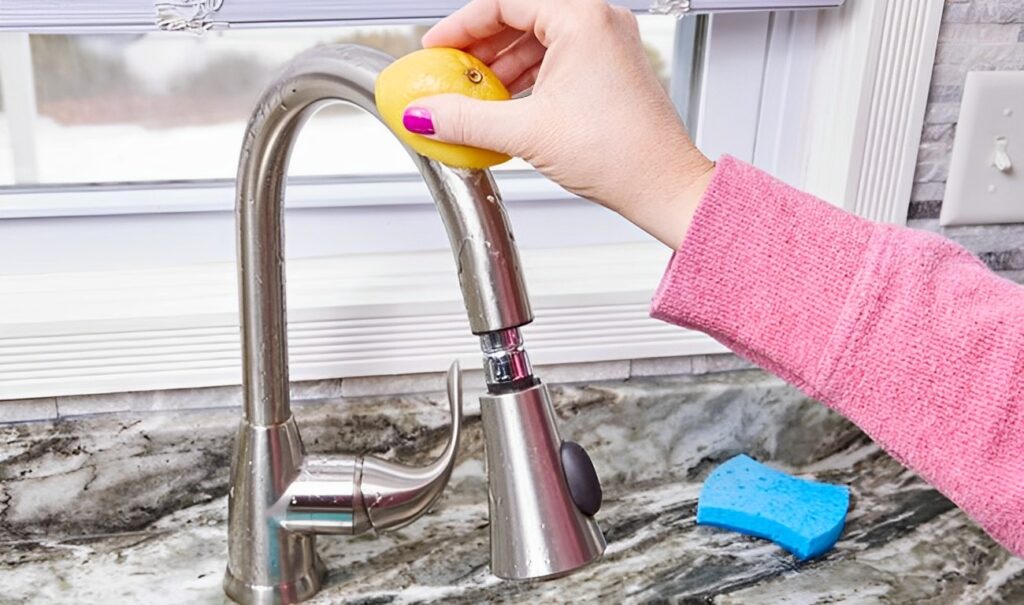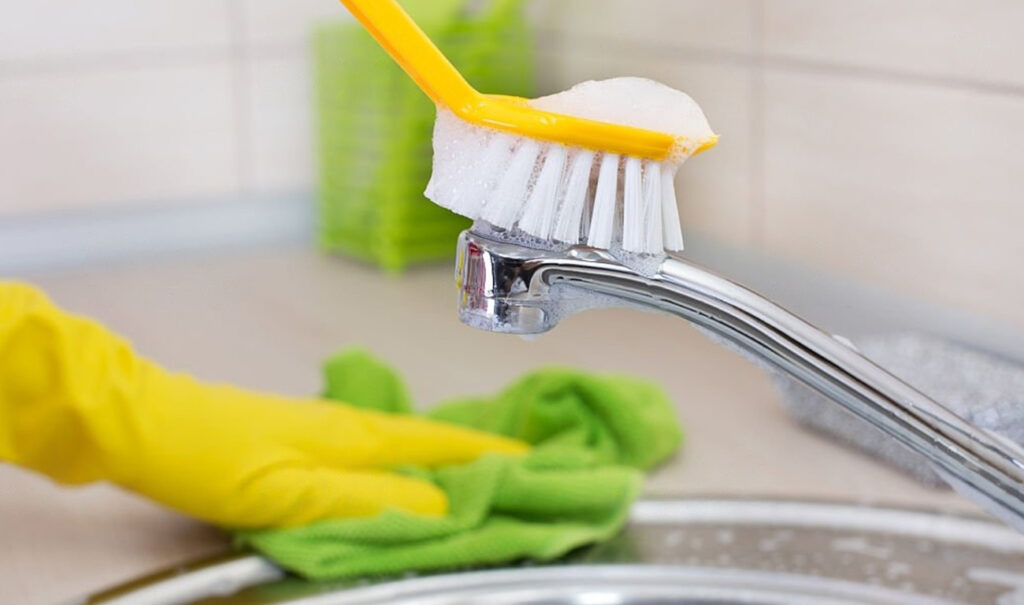Are you tired of dealing with stubborn stains on your kitchen faucets? Over time, mineral deposits, hard water stains, and grime can accumulate on the surface of your kitchen sink faucets, making them look dull and dirty. Since the old faucet looks untidy and unattractive, people think that it is time to replace it. Well, of course, you can buy a new faucet to ensure that the older one does not add any flaws to your kitchen decor. But those who wish to solve this issue without additional expenses can consider some DIY techniques.
With the right faucet cleaning techniques and a little effort, you can easily eliminate those unsightly stains and restore the shine of your kitchen faucets. In this article, we will share five effective cleaning tips to help you get rid of stains and keep your kitchen sink faucets looking clean and sparkling.
Tip #1: Vinegar Solution

Vinegar is a versatile and natural faucet cleaning agent that can work wonders on stubborn stains. Mix equal parts of white vinegar and water in a spray bottle to create a vinegar solution. Spray the solution onto the stained areas of your kitchen faucet and let it sit for a few minutes. Then, scrub the stains gently with a soft cloth or a toothbrush. Rinse thoroughly with water and wipe dry. The acidic properties of vinegar will help break down the mineral deposits, and stain removal gets easy and effective.
Tip #2: Baking Soda Paste

Baking soda is another powerful natural cleaner that can work for stain removal from various surfaces, including kitchen faucets. Make a paste by mixing baking soda with a small amount of water. Apply the paste to the stained areas and let it sit for about 15 minutes. Then, scrub the stains gently using a soft brush or sponge. Rinse the faucet with water and dry it with a clean cloth. Baking soda is mildly abrasive and can effectively lift off stains without causing damage to the faucet’s finish.
Tip #3: Lemon Juice Scrub

This is one of the easiest faucet cleaning tips. Lemon juice is not only refreshing but also has natural bleaching properties that can help eliminate stains from your kitchen faucets. Cut a lemon in half and rub the cut side directly onto the stained areas. Allow the lemon juice to sit on the stains for a few minutes. Then, scrub the stains gently using a soft brush or cloth. Rinse thoroughly with water and dry the faucet to reveal a sparkling, stain-free surface. Lemon juice removes hard water stains and gives your kitchen sink faucets a fresh citrus scent.
Tip #4: Toothpaste Trick

Believe it or not, toothpaste can be an excellent cleaner for your kitchen faucets. Choose a non-gel toothpaste that contains mild abrasives. Apply a small amount of toothpaste to a soft cloth or toothbrush and rub it onto the stained areas. Gently scrub the stains in circular motions, paying attention to the crevices and hard-to-reach spots. Rinse the faucet with water and wipe it dry. Toothpaste helps in stain removal and polishes the surface also. This makes your kitchen faucets look bright and clean.
Tip #5: Commercial Cleaners

If the above natural remedies don’t yield satisfactory results, you can opt for commercial cleaners specifically designed for faucet stain removal. These cleaners are readily available in the market and often come in spray or liquid form. Follow the instructions on the packaging for the best results. Choosing a cleaner that is safe for the type of faucet material you have is important. Always test the cleaner on a small, inconspicuous area first to ensure compatibility and avoid any potential damage.
Conclusion
With regular use, kitchen faucets can accumulate stains that can make them look unattractive. However, by following the cleaning tips mentioned in this article, you can easily eliminate those stains from your kitchen sink faucets. Remember to use natural remedies like vinegar, baking soda, lemon juice, or toothpaste first, and if needed, consider commercial cleaners. Keeping your kitchen faucets clean and stain-free will not only enhance the overall appearance of your kitchen but also promote good hygiene.
